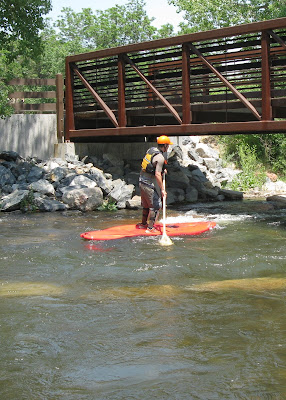Fishing stories generally come with some level of exaggeration. No one likes to stretch a good fish yarn more than yours truly but I feel that a percentage of legitimacy is lost when you stretch things too much along the way. The art of telling a good story can only be made believable if it is met with honesty, the more honesty the better. Tweaking a few details here and there for various reasons may be acceptable or even prudent depending on the detail itself. Push the story too far and an angler could lose their “water-cred” which actually means quite a bit to even a shameless fish bragger like me. So how far can one push a single fish story before it can be considered complete hogwash. According to my research the answer is ten feet.
At first this may seem like too simple of answer but in most cases one story equals ten feet. What matters most is the quality of layers and overall construction of the story itself. If you tell only one story it is not as crucial I guess but if you tell many stories it is best to keep things as tried and true as possible. Keeping the entire story within a ten-foot margin helps establish just where we draw the line as a teller of the story. I will be the first to say that I have embellished a fish tale now and then. Hopefully I have stayed within the ten-foot range even after a few beers.
In par with my level of research on the subject, I will toss out some of my rules on exaggeration.
- Be as accurate as possible in regards to size and weight of fish. Downplay the stats if there is any doubt.
- Don’t highly exaggerate facts about wind, weather, water temps, etc unless people can obviously deduce the level of fiction being used.
- Don’t try to pass of “false-facts” that can be easily verified. Not sure why people still do this but I still see it from time to time.
- Humility is easier to swallow from a reader’s point of view. So it helps if you don’t come across sounding like some self-serving butt wad. Hopefully my shameless bragging is closer to a spoonful of self-humility than some of the rubbish on the Internet.
- Doctoring photos leads to doubt. I am guilty of doing this myself in attempt to cover certain landmarks or features in the background. But I fully accept some viewers will notice and water-cred may be lost.
Maybe a bad example of a post will explain this a little better.
“Caught a huge rainbow trout on the tenkara rod the other day. This fish is eighteen inches and well over a pound or maybe even two. Thing fought like a brick @#$& house until I swam half a mile upstream to net the fish. Guess that makes me the best angler ever!”
(Above: In reality this is may be a twelve-inch fish at best and you guys know I don’t have a tenkara rod. Lying about swimming upstream half a mile definitely violates the 10-foot rule and Colorado has a lot of great anglers. Most of them are way better than me. True story.)





























